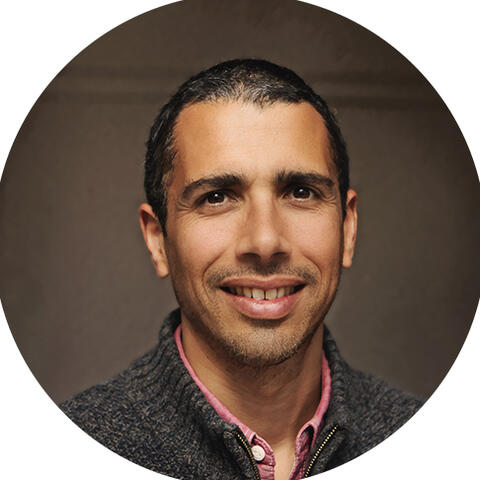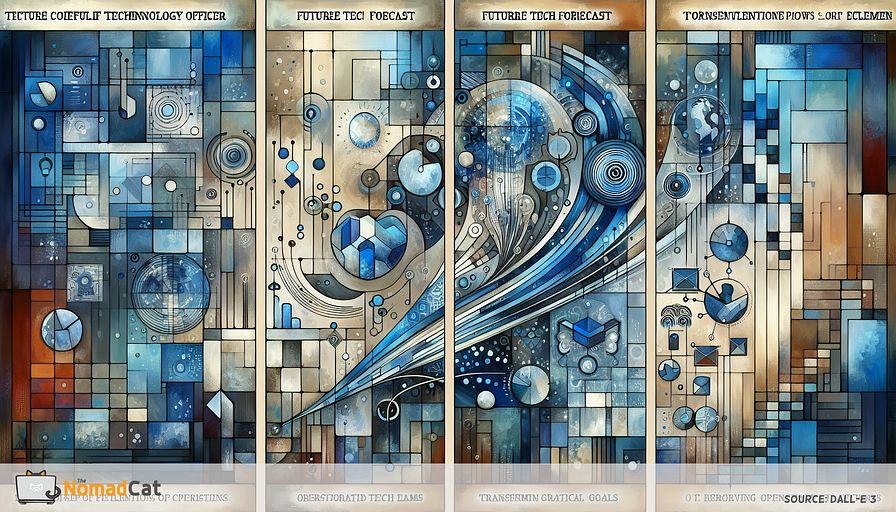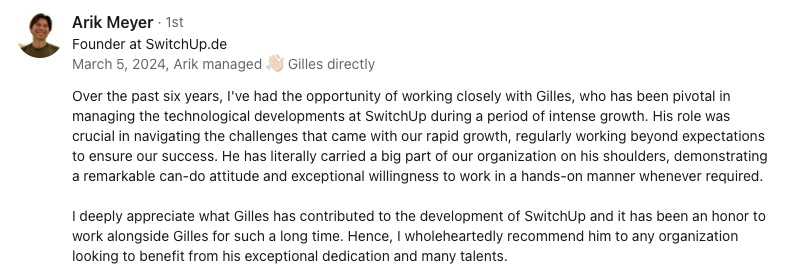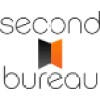CTO's Vision: Navigating Tech's Future Through Three Lenses
Abstract:
As a Chief Technology Officer, envisioning the future of technology involves forecasting trends and aligning them with company objectives, understanding potential disruptions, and being proactive in technological investments. Implementing technology entails converting strategy into actionable tasks, orchestrating IT teams effectively, and ensuring seamless transitions. Learning from past decisions and technological evolution is crucial, as it enables refining processes, anticipating risks, and fostering continuous improvement. These three lenses - conceptual, operational, and reflective - guide the CTO in navigating the technological landscape.
introduction to the cto's role and vision
The chief technology officer (CTO) – the mysterious wizard behind the tech curtain. This executive maestro is not just fiddling with gadgets; a CTO crafts the symphony that leads an organization toward technological brilliance. A company's future rests heavily on the shoulders of the one who not only understands technology but also envisions its trajectory.
Imagine a person holding a crystal ball (okay, maybe just a highly sophisticated algorithm) and peering into the future. The CTO’s vision isn't about magic; it’s about *strategic foresight*. Their ability to forecast tech trends and align them with company objectives is nothing short of an art form. A good vision stems from recognizing patterns, understanding industry movements, and aligning these projections with corporate goals.
To explore the CTO's vision, we'll observe it through three specific lenses:
- Conceptual lens: Forecasting trends and aligning objectives.
- Operational lens: Implementing technology and orchestrating IT teams.
- Reflective lens: Learning from past decisions and continuous evolution.
Buckle up as we dissect these perspectives, uncovering how the CTO navigates the fascinating yet complex domain of technology, guiding their organizations through the fog of uncertainty into the thriving landscapes of the future.
conceptual lens: forecasting trends and aligning with objectives
Peering through the conceptual lens, the CTO dons the hat of a tech-augury, peeking not into tea leaves but data sets, industry reports, and market analyses to forecast what lies ahead in the tech world.
The first task on this visionary journey is predicting future technological trends—a task as exhilarating as it is daunting. It’s about identifying emerging technologies that can thrust the organization ahead of the pack. Think of this as a game of three-dimensional chess, where foresight and strategy combine. CTOs must recognize patterns, like how the emergence of cloud computing redefined data storage, or the rise of artificial intelligence is now reshaping decision-making processes.
aligning trends with strategic objectives
A CTO's crystal ball isn’t just for show; it’s a tool for crafting a pragmatic tech roadmap. Aligning these trends with the company’s strategic objectives is crucial. It’s like threading a needle while riding a rollercoaster—precision combined with agility. Let's take an example: if sustainability is a core company value, forecasting advancements in green tech becomes a top priority. The aim here is to ensure technology adoption that not only dazzles but also dovetails with the company's overarching goals.
Creating such a roadmap involves answering key questions:
- What emerging technologies align with the company’s mission?
- How can these trends be integrated to enhance our current offerings?
- What are our competitors doing, and how can we differentiate ourselves?
Take, for instance, Netflix's early investment in streaming technology, which allowed it to pivot seamlessly from DVD rentals to online streaming, long before the market was saturated. This foresight wasn't by chance; it was the result of a thorough analysis of internet speeds, consumer behavior, and content delivery trends. That strategic alignment with the rapidly growing internet infrastructure catapulted Netflix to the top of the entertainment industry.
Making these decisions requires more than a hunch. CTOs rely on a combination of market research, pilot projects, and sometimes, plain old gut feeling. It’s about blending concrete data with an almost artistic sense of what’s coming next. That's why companies don't just hire tech wizards; they seek out those rare individuals who can glimpse tomorrow and pull it into today's strategy machine.
In sum, the conceptual lens is about forecasting, aligning, and preparing. It’s about knowing that while you can’t predict the future, you can certainly shape it to your advantage. With the right foresight and strategic alignment, a CTO can transform potential chaos into a coherent, progressive technological journey.
operational lens: implementing technology and orchestrating IT teams
When it comes to the operational lens, the CTO shifts from the ethereal realm of visions and forecasts to the more tangible world of action and implementation. It’s one thing to dream up a future full of shiny tech gadgets; it’s another to make that vision a reality. This involves not just implementing cutting-edge technology but also orchestrating skilled IT teams to execute this transformation smoothly.
Imagine the CTO as a tech-savvy conductor. Their symphony? A well-coordinated IT team delivering a harmonious blend of technology and business goals. The first step is translating the conceptual roadmap into concrete actions – think of it as turning blueprints into a skyscraper.
from strategy to action
The transition from strategic planning to hands-on implementation often resembles a game of telephone. What might start as a brilliant idea can quickly turn chaotic if not managed meticulously. This is where the CTO's operational prowess comes into play. Successful implementation starts with clear communication, ensuring that everyone, from the C-level executives to the new interns, understands the objectives and their roles in achieving them.
Effective implementation involves several key practices:
- Project prioritization: Not all tasks are created equal. A CTO must determine which projects align most closely with the strategic goals and allocate resources accordingly.
- Resource allocation: This includes budgeting and staffing. It’s crucial to ensure that each project has the necessary human and financial resources to succeed.
- Timeline management: Setting realistic deadlines and sticking to them. This helps keep the project on track and avoids the common pitfall of scope creep.
One illustrative example is how Amazon approached the development of its cloud platform, Amazon Web Services (AWS). The CTO and his team didn't merely scribble ideas on a whiteboard; they meticulously planned resource allocation, set clear timelines, and executed in phases. This approach allowed Amazon to roll out a robust, scalable service that has since revolutionized the cloud industry.
orchestrating the IT team
Now let's talk about the most crucial resource: People. Orchestrating IT teams is akin to herding cats, particularly when dealing with an array of developers, engineers, data scientists, and analysts. The CTO’s role here is to create an environment where collaboration thrives, and obstacles are quickly addressed.
Key strategies include:
- Clear roles and responsibilities: Everyone should know what they are supposed to do and how their tasks fit into the broader picture.
- Collaboration tools: Utilizing platforms like Jira, Slack, and Git helps teams to communicate effectively and track their progress.
- Continuous learning: Technology evolves rapidly. Encouraging regular training and learning opportunities helps keep the team’s skills sharp.
Consider a quote from Susan, a seasoned CTO: "Your team is your greatest asset. Equip them with the right tools, foster a collaborative culture, and invest in their growth - you'll see projects not just getting done, but getting done better than you imagined."
However, orchestrating a team is not without its challenges. Common hurdles include miscommunication, resource constraints, and resistance to change. Overcoming these demands a combination of soft skills and technical acumen. For instance, handling resistance might involve more transparent communication and involving team members in decision-making processes. CTOs who succeed are those who can inspire their teams while also being hands-on enough to understand the technical intricacies.
embracing change and ensuring seamless transitions
The final piece of the puzzle is ensuring that technological implementations are seamless. Change can be disruptive, especially if not managed effectively. A CTO must anticipate challenges, prepare contingency plans, and engage in continuous monitoring and feedback loops to ensure smooth transitions. This dynamic approach helps mitigate risks and keeps the project aligned with strategic objectives.
Remember when Microsoft decided to shift its flagship software products like Office to a subscription model with Office 365? It wasn’t just a simple product rollout. It involved re-training teams, redefining customer support processes, and rearchitecting backend systems to facilitate this transition. Success was achieved through meticulous planning, transparent communication with stakeholders, and continual iteration based on user feedback.
In summary, operating through the operational lens is about transforming visions into actionable plans and aligning technology with business goals. It requires a blend of strategic oversight and hands-on management. By excelling in this arena, CTOs ensure that their visionary ideas do not remain just concepts but evolve into impactful technological advancements.
reflective lens: learning from past decisions and evolution
Swimming through the reflective lens, the CTO transforms from a tech virtuoso to a wise sage. This perspective emphasizes the importance of dissecting past decisions to understand technological evolution better. Hindsight, like a trusty rearview mirror, helps refine processes, anticipate risks, and fosters a culture of ongoing improvement. So, let's dive into why reflecting on the past is as crucial as planning for the future.
importance of learning from past decisions
It's often said that those who ignore history are doomed to repeat it. CTOs know this better than anyone. Analyzing past successes and failures isn't just academic; it’s a practical tool for shaping future strategies. For example, evaluating why a particular project succeeded can provide insights into effective project management practices, team dynamics, and resource allocation. Conversely, understanding why a project failed can highlight gaps in planning, communication, or technology choice. Such reflections are invaluable for refining future approaches and fostering a learning culture.
Take IBM’s missed opportunity with cloud computing, which significantly impacted its market position. The company later analyzed its approach and redefined its cloud strategy, leading to the development of IBM Cloud. This reflective practice helped them re-emerge as a formidable player in the cloud space. Lesson learned: ignoring emerging technologies can be costly, but there’s always an opportunity for course correction.
evaluating technological evolution
Technological advancement isn’t a straight line; it's more like a winding road with unexpected turns. By reflecting on how technology has evolved, CTOs can better anticipate future trends and prepare their organizations accordingly. This involves looking at industry shifts, such as the transition from on-premises data centers to cloud computing or the surge in artificial intelligence applications. Understanding these shifts helps the CTO make more informed decisions and prepares the organization to leverage new technologies effectively.
refining processes and fostering continuous improvement
The reflective lens also involves fine-tuning internal processes for better efficiency. This could mean streamlining workflows, enhancing collaboration tools, or improving project management methodologies. The objective is to create an agile, responsive environment where continuous improvement is the norm. For instance, Netflix's evolution from a DVD rental service to a leading streaming platform wasn't a fluke. It involved constant reflection, agile adaptation to market demands, and an unwavering focus on innovation.
To sum it all up, by embracing the reflective lens, CTOs ensure that mistakes of the past become lessons for the future. This approach helps refine processes, mitigate risks, and encourages a culture of continuous improvement, ultimately steering the organization toward sustained technological success.
concluding thoughts: integrating three lenses for success
Just like a futuristic tri-lensed camera, a CTO's effectiveness hinges on viewing the technological landscape through three key perspectives—conceptual, operational, and reflective.
The conceptual lens offers the foresight needed to identify tech trends that align with the company’s strategic objectives, blending insight with planning.
The operational lens translates these visionary plans into actionable blueprints, ensuring the symphony of technology and business goals plays harmoniously.
The reflective lens keeps history alive, teaching invaluable lessons from past triumphs and stumbles, fine-tuning processes, and driving continuous improvement.
It’s this trifecta that positions a CTO to steer an organization adeptly through the tech cosmos. So, it’s not just about peering into the future; it’s about transforming those glimpses into a well-guided journey, combining foresight, execution, and retrospection to craft a sustainable and dynamic technological evolution.














